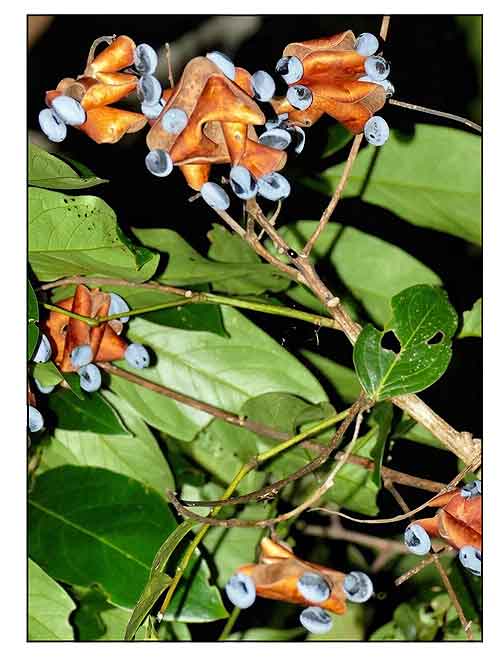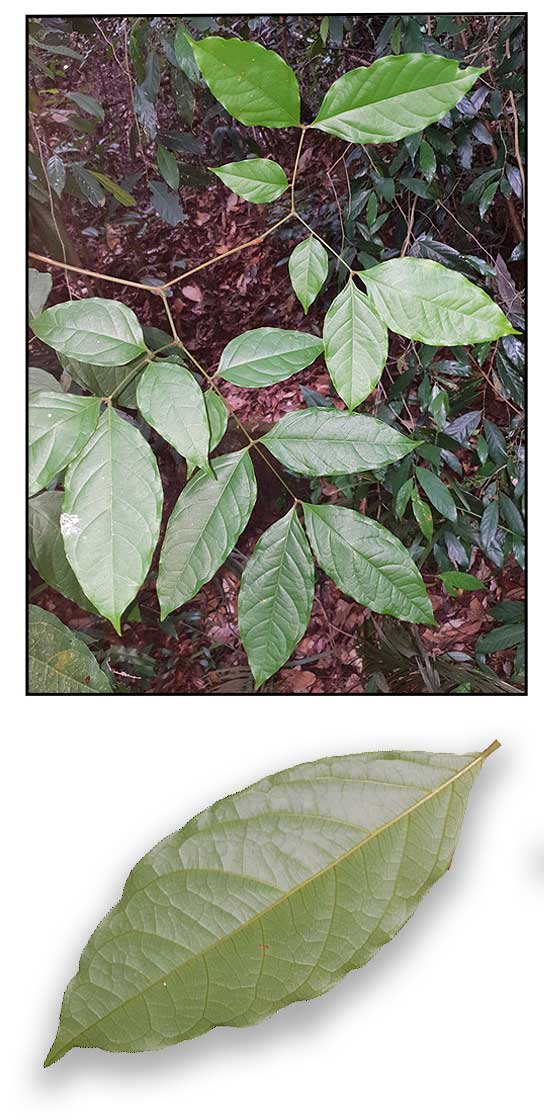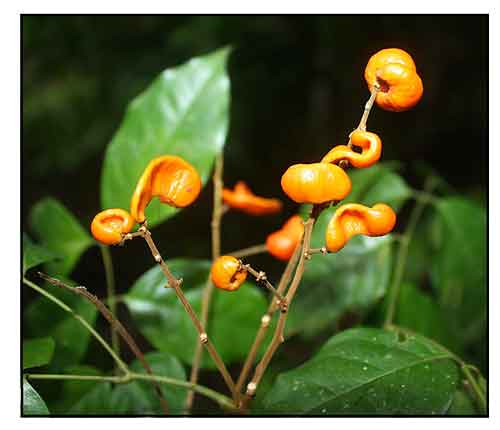
Family • Fabaceae
Salingkugay
Bugas
Archidendron ellipticum (Blume) Nielsen
ELLIPTIC ARCHIDENDRON
Tuo yuan ye hou er huan
| Scientific names | Common names |
| Abarema elliptica (Blume) Kosterm. | Salingkugay (Tag.) |
| Albizia elliptica (Blume) E.Fourn. | Elliptic archidendron (Engl.) |
| Archidendron ellipticum (Blume) Nielsen | |
| Feuillea elliptica (Blume) Kuntze | |
| Inga elliptica Blume | |
| Pithecellobium ellipticum (Blume) Hassk. | |
| Accepted infraspecifics (2) | |
| Archidendron ellipticum subsp. ellipticum | |
| Abarema waitzii (Kosterm.) Kosterm. | |
| Albizia fasciculata (Benth.) Kurz | |
| Feuillea beccariana Kuntze | |
| Pithecellobium fasciculatum Benth. | |
| Pithecellobium waitzii Kosterm. | |
| A. ellipticum subsp. subcordioliolatus I.C.Nielsen (endemic) | |
| Archidendron ellipticum (Blume) I.C.Nielsen is an accepted species. KEW: Plants of the World Online | |
| Note: Salingkugay needs confirmation. I have also borrowed the Indonesian common name Bugas as part of the plant page title. For want of an English name, Elliptic archidendron. | |
| Other vernacular names |
| BORNEO: Indelebah, Jaring, Jering-jering, Langir antu. |
| CHINA: Tuo yuan ye hou er huan. |
| INDONESIA: Kicaang, Bugas. |
| THAI: Klet chara khe. |
Gen info • Trees, small, to 20 m tall. Branchlets terete, with white lenticels; young branchlets brown pubescent. Pinnae 1 or 2 pairs; glands at upper part of petiole and rachis; petiolules 3-4 mm; leaflets 2 or 3 pairs, opposite or subopposite, elliptic or ovate-elliptic, 7-18 × 3-9 cm, both surfaces glabrous, base cuÂneate to broadly cuneate, apex acuminate to long acuminate. Heads 2-6-flowered, arranged in terminal and axillary panicles. Calyx 4.5-5 mm; teeth 0.5-1 mm. Corolla 4.5-5 mm; lobes 2-2.5 mm. Staminal tube equaling corolla tube. Ovary puberulent. Legume curved into a circle, 4.5-8 mm in diam.; valves 2-3.5 cm wide. Seeds 1.7-2.1 × 1-1.1 cm. Fl. and fr. year-round. (Flora of China) Constituents Properties Availability |
Updated Nov 2025
July 2025
![]()
 |
| Â Â Â Â Â Â Â Â Â Â Â Â Â Â Â Â Â Â Â Â Â Â Â Â Â PHOTOS / ILLUSTRATIONS |
| IMAGE SOURCE: Archidendron ellipticum / © Andraescholz / CC BY-NC / some rights reserved / Non-commercial use / click on image or link to go to source page / iNaturalist |
| OTHER IMAGE SOURCE: Archidendron ellipticum / Ahmad Fuad Mora / / © All rights reserved / Non-commercial use / Click on image or link to go to source page / flickr |
| IMAGE SOURCE: Archidendron ellipticum / Leaf close-up / David Tng / © All rights reserved / Non-commercial use / Image modified / click on image or link to go to source page / iNaturalist |
| IMAGE SOURCE: Archidendron ellipticum leaves / David Tng / © All rights reserved / Non-commercial use / Image modified / click on image or link to go to source page / iNaturalist |
Additional
Sources and Suggested Readings |
• |
DOI: It is not uncommon for links on studies/sources to change. Copying and pasting the information on the search window or using the DOI (if available) will often redirect to the new link page. (Citing and Using a (DOI) Digital Object Identifier) |
| Â Â Â Â Â Â Â Â Â Â Â Â Â Â Â Â Â Â Â Â Â Â Â Â Â Â Â Â Â Â List of Understudied Philippine Medicinal Plants |
| Â Â Â Â Â Â Â Â Â Â Â Â Â Â Â Â Â Â Â Â Â New plant names needed The compilation now numbers over 1,730 medicinal plants. While I believe there are hundreds more that can be added to the collection, they are becoming more difficult to find. If you have a plant to suggest for inclusion, native or introduced, please email the info: scientific name (most helpful), local plant name (if known), any known folkloric medicinal use, and, if possible, a photo. Your help will be greatly appreciated. |
• |
 |




